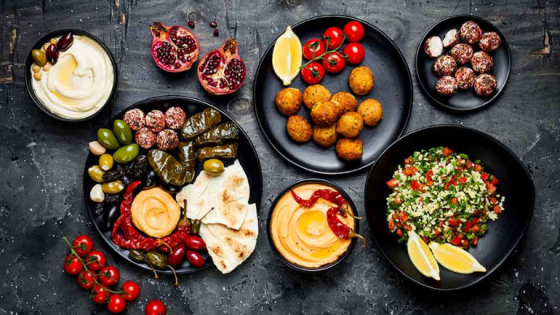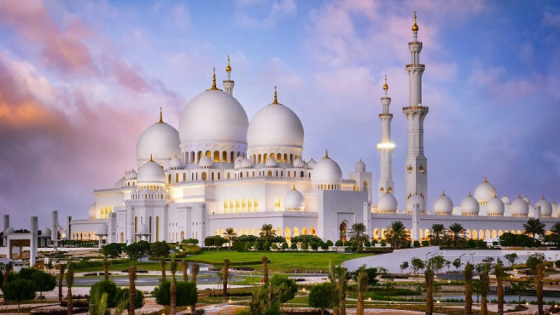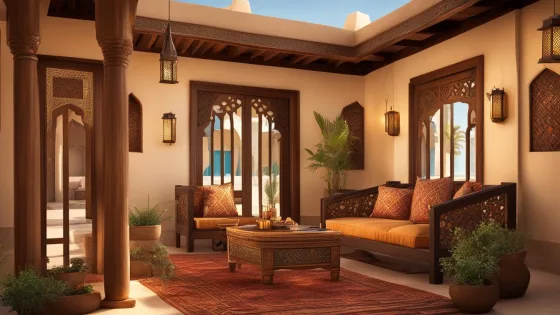Contents
- 1 UAE Culinary Culture
- 2 Dubai Food Culture and Emirati Cuisine
- 3 Emirati Bedouin-style Culture
- 4 Traditional Emirati Food in UAE Culinary
- 5 Emirati Breakfast Specialties Dishes
- 6 Traditional United Arab Emirates Lunch Dishes
- 7 Traditional Desserts in UAE Culinary
- 8 Abu Dhabi Tasty Dishes According to MICHELIN Chefs
- 9 Culinary Insights in UAE Cuisine
UAE Culinary Culture is often attached by those who visit Dubai. The Emirati Culinary Culture has changed dramatically over the last century. The majority of Dubai residents have never experienced indigenous UAE cuisine. Even young Emiratis, particularly those living in more sophisticated sections of the nation, such as Dubai, do not have them daily.
In Dubai today, you can find any food from east to west. You may be perplexed if you go to a restaurant and order Chinese food. You may need to be more particular because there is so much of everything. Even if you go to an Arabic restaurant, most of the foods on the menu are Lebanese or Egyptian. Hummus, one of the most popular foods in the UAE, originates from Levantine. That’s fine since traditions and cuisines go through much giving and taking as they change due to culture.
Read more: UAE Digital Culture
UAE Culinary Culture
Emirati cuisine reflects the region’s culture, climate, and resources. It has undergone numerous transformations. Their cuisine changed dramatically after the discovery of oil and the influx of ex-pats. For example, chicken flesh is a relatively new addition to Dubai cuisine. Previously, camels, goats, and other birds, such as Houbaras, were utilized for meat. Fish was an essential cuisine feature because of the extensive fishing commerce among Emiratis.
The UAE culinary culture in this region of sand is not confined to the range of cuisines offered in restaurants or the rarest ingredients found in local grocers. It may be tough to believe that these magnificent organic fruits and vegetable farms exist amid this desert setting. The best aspect is that these farms are available to the public, allowing anyone to visit, pluck, and buy fresh and local vegetables.
Read more: Dubai Art Galleries Tour
Dubai Food Culture and Emirati Cuisine
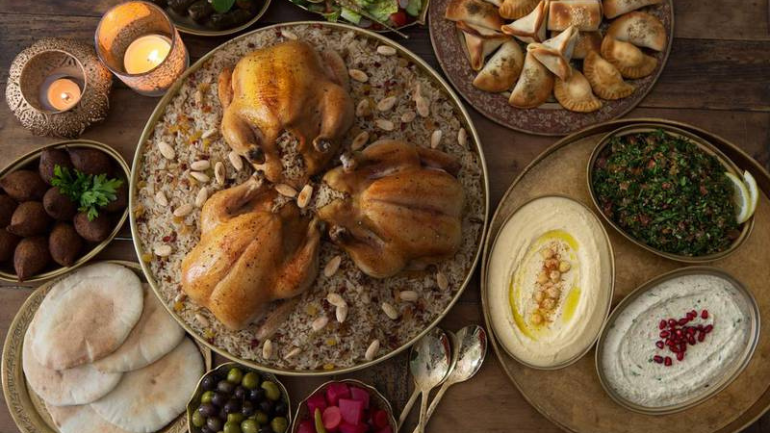
This multiculturalism shines brighter than Dubai’s high-rises, theme parks, and manmade islands. This is more evident in Dubai’s food culture, which blends traditional culture and food to showcase the city’s foreign influences, from markets to restaurants to cultural centers. Dubai has a population of over 3.5 million, with just about 15% Emirati. Naturally, a city on a never-ending drive to break records would have one of the most diverse populations on the planet, with the tallest skyscraper and cultures of expats worldwide.
Despite its variety, Dubai might feel more like a mezze platter of national. From atop the Dubai Frame, you can see these figurative divisions carved in the physical sand, with the old-town neighborhoods where Emiratis reside filling one side of the city and the downtown regions where the glitterati vacation occupies the other.
Read more: Abu Dhabi National Museums
Emirati Bedouin-style Culture
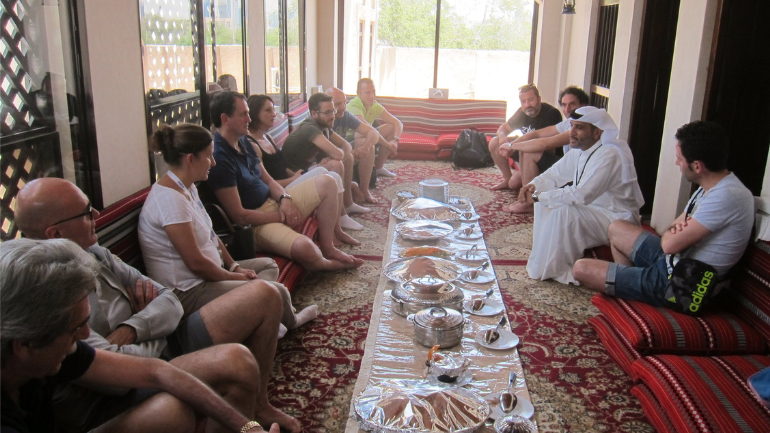
Dubai’s ruler and the UAE’s prime minister founded the Sheikh Mohammed bin Rashid Al Maktoum Centre for Cultural Understanding (SMCCU) in the Al Fahidi Historic District in 1998 to encourage cultural unification. As part of a more significant push to reconcile the different cultures that make up Dubai today, he intended to establish a secure area for foreign nationals to learn more about local practices.
Visitors can organize heritage or walking tours, mosque visits, and other activities through the SMCCU, but the true delight is the cultural dinner program. Take the breakfast service, the ideal way to start any trip to Dubai. Participants form a Bedouin-style circle on the floor before a feast of traditional Arab cuisine. Balalit (sweet vermicelli noodles with egg), dango (boiled chickpeas with chilies and spices), lugaimat (deep-fried dough balls), and Arabic coffee with sweet dates are all possibilities.
Read more: Sharjah Islamic Museum
Traditional Emirati Food in UAE Culinary
Local hosts provide context for the foods served and explain regional eating practices while guests enjoy traditional Dubai cuisine. They narrate anecdotes from their childhoods, provide details about their life, and act as Emirati ambassadors. The discussion is open and honest, and all questions are welcome. All of this, plus the cuisine, is undeniably great. Brunch, lunch, supper, and afternoon tea are served throughout the week.
Read more: UAE Local Customs Insights
Emirati Breakfast Specialties Dishes
Although many delectable and exciting foods exist, UAE favorites include Hares, Chababand, and Matchbooks. Harees is a famous Emirati dish often served on special occasions such as weddings and religious holidays. The preparation method is cooking the meat in a saucepan with wheat and salt. Over hot coals, cook the mixture until the meat and grain combine and thicken.
Chabab is a yellow Emirati pancake made with flour, eggs, sugar, and flavoring spices such as Cardamon and saffron. Machboos is a rice-based stew cooked with pork, chicken, or fish. Flavorings include Cardamon, cloves, cinnamon, dried lemon, golden raisins, and lentils.
Chabab Bread, Emirati Pancake
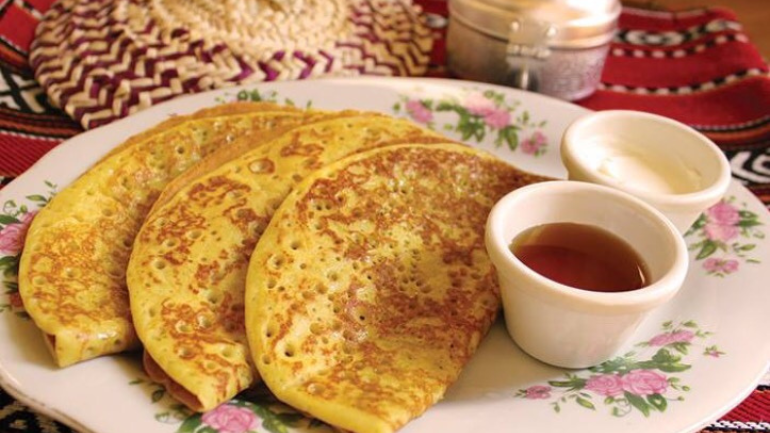
It is a thin, crisp, and sweet bread with the appearance and feel of an American pancake. Chebab bread has flour, egg, melted butter, and yeast. Fennel and turmeric will enhance the flavor even further. Chabab is derived from cooking bread till it is light brown or golden yellow on both sides. The Chabab bread and Chami cheese (or Kraft cream cheese) are typically served together. Chami is a buttermilk-based salty cheese. The chebab bread will be topped with date syrup and honey. It is sometimes topped with sesame seeds as well. Serve this breakfast dish immediately.
Beidh Wa Tomat, Shakshuka
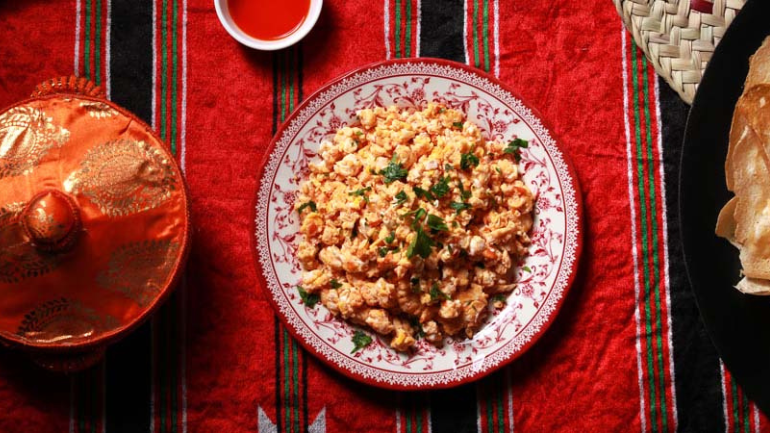
Shakshuka is scrambled eggs with tomato and pepper. Thyme and coriander will be sprinkled on top of the tomato. Instead of scrambled eggs, a distinct Shakshuka version with poached eggs is available. Shakshuka is a simple and healthful morning dish made in a single skillet with ordinary ingredients.
Khameer Bread
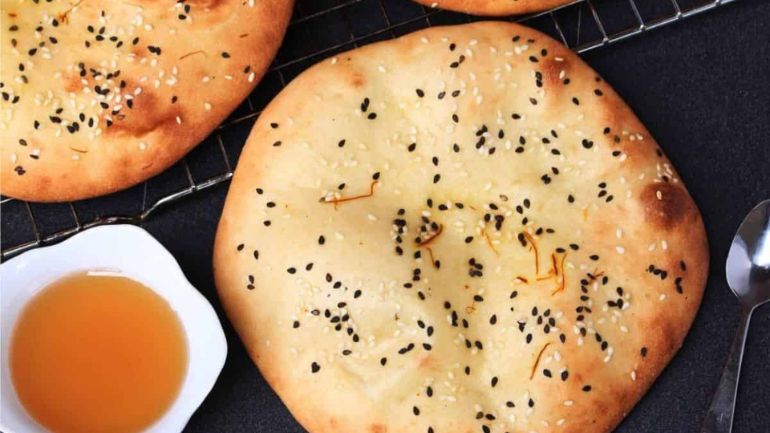
This is easily the softest bread on the planet. Khameer bread is a circular, fluffy flatbread with two independent layers. Dates are used to sweeten this bread instead of sugar. The bread is flavored with fennel, saffron, and cardamom. This would be easier to make if you had an oven. Traditionally, Arabs baked khameer bread in coal ovens. The Khameer bread may remind you of a burger bun but with a sprinkle of sesame seeds on top. While eating, divide the layers and insert the butter or cream. The bread is so delicate that a fresh Khameer will melt in your mouth with a touch.
Dango, Boiled chickpeas
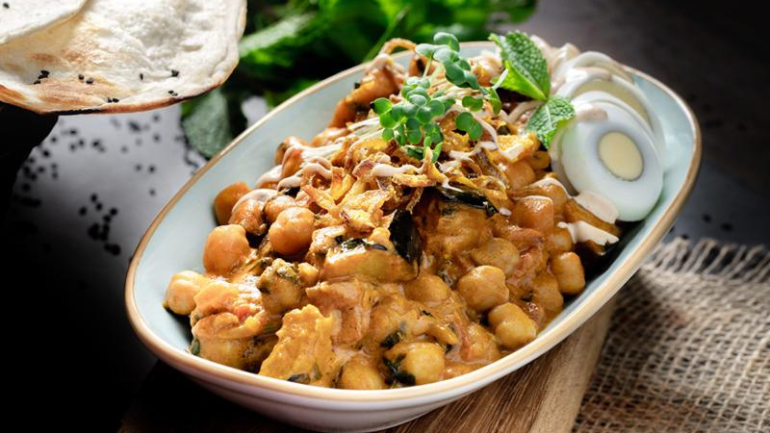
This dish consists of boiling chickpeas with red chilies and spices. The dish is kept for a long time without spoiling. As a result, Arabs carried it with them on long desert travels. Dango can be made on the spur of the moment. As a result, it is also a favorite evening snack. Dango is the Emirati version of Levantine Hummus. Instead of being ground into a paste, the chickpeas are cooked till soft with salt and spices. To decrease the cooking time, soak the chickpeas overnight. The water used to boil the peas is not discarded. It is repurposed to make soups and stews.
The Baleelat
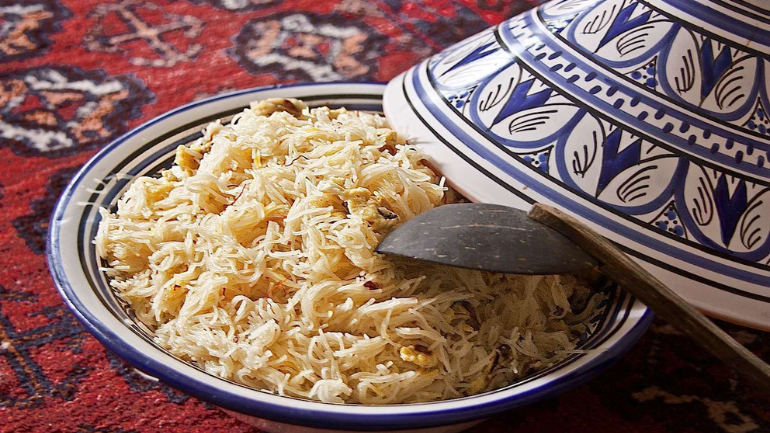
The Baleetat is a mix of sweet and salty flavors. It’s a brunch dish that combines an omelet and vermicelli. Flavoring agents include sugar, cinnamon, saffron, cardamom, orange flower, or rosewater. Spices are mixed into the sweetened vermicelli, finishing the dish with a thin egg omelet. The Balaleet serves as both a breakfast and a dessert. It is an unavoidable feature of Emirati Iftars and Eid celebrations. Other cuisines contain a near relative of Balaleet. The Persian Faloodeh and the Indian Sheer Khurma are both vermicelli-based ceremonial delicacies.
Balaleet is traditionally served warm for breakfast but should be served cold as a dessert. Balaleet is sometimes served with garbanzo beans and black-eyed beans. According to legend, Balaleet became a part of Emirati cuisine after they experimented with pasta.
Khubz Regag, Raqaq Bread
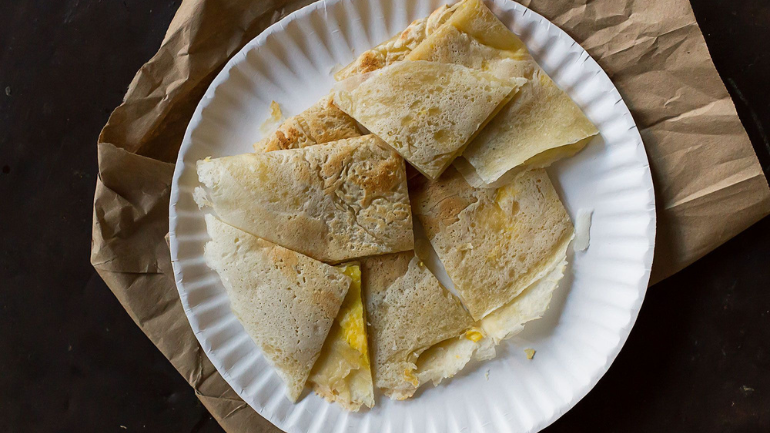
Reqaq is a crunchy, paper-thin whole wheat bread. Flatten the dough and fry it in a pan or hot iron plate. This is nearly identical to the Indian flatbread chapati. Reqaq is derived from the Arabic word Reqa, which means “thin.” This is the most prevalent variety of Emirati bread and a staple in Emirati homes, especially for Ramadan dinners. Tharyd (Fareed in some dialects) is served with Reqaq. If you prefer sweet, roll the bread in honey or serve with cheese and sugar.
Read more: Cultural Festivals in UAE
Traditional United Arab Emirates Lunch Dishes
Emirati cuisine is the traditional Arabic cuisine of the United Arab Emirates. It belongs to Eastern Arabian cuisine and bears similarities with cuisines from nearby nations, such as Omani and Saudi Arabian cuisine, and influences from various Middle Eastern and Asian cuisines. Here are some traditional Emirati dishes for lunch.
Al Hareeth
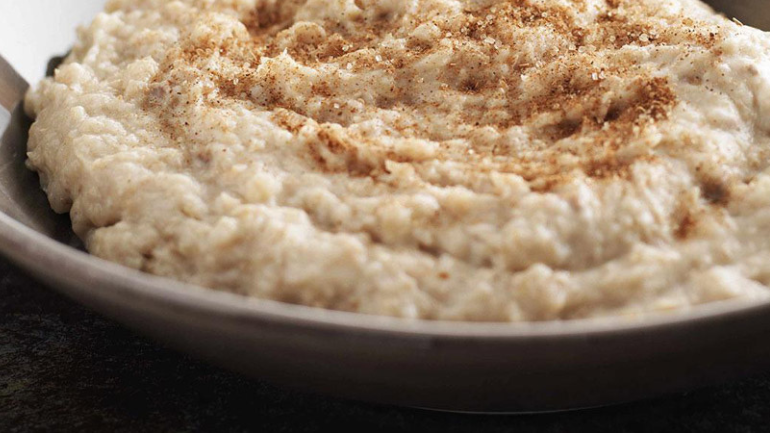
The Hareeth is an ancient food required during ceremonies and festivities. The method of preparation is unique and time-consuming. Continuous boiling for at least 3 hours is required. If meat is included, it will take even longer. Hareeth is a wheat porridge that contains meat and ghee. The wheat must be boiled in salted water for three hours until it fluffs. This will take approximately 3 hours. The meat is added to the mixture and cooked to make a thick porridge.
After frying, ghee is drizzled on top. Hareeth is usually served steaming hot. You can eat it simply or with a sprinkle of sugar. Some people serve it with chopped onion. Hareeth is so easy to stomach and delicious after all those hours of preparation.
The Thereed
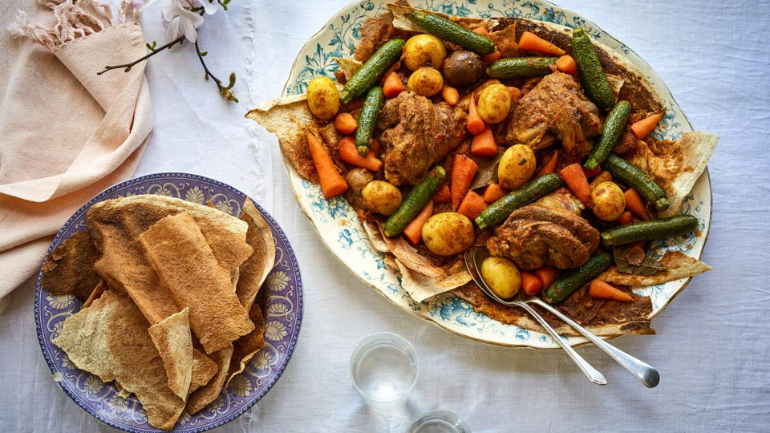
Thereed, also known as Fareed, is a popular Iftar meal in the UAE. Because it is light on the stomach, it is preferred for breaking fast. There is a pork stew with vast chunks of potato there. It can be made with either chicken or lamb. But if you like vegetables, go ahead and use them. The Tagine, popular in Morocco, is the closest related to Thereed in any other cuisine. The hearty flavors of beef and potatoes are combined with veggies in Thereed. If you want to taste it, pair it with Raqaq bread.
Samak Mashwi
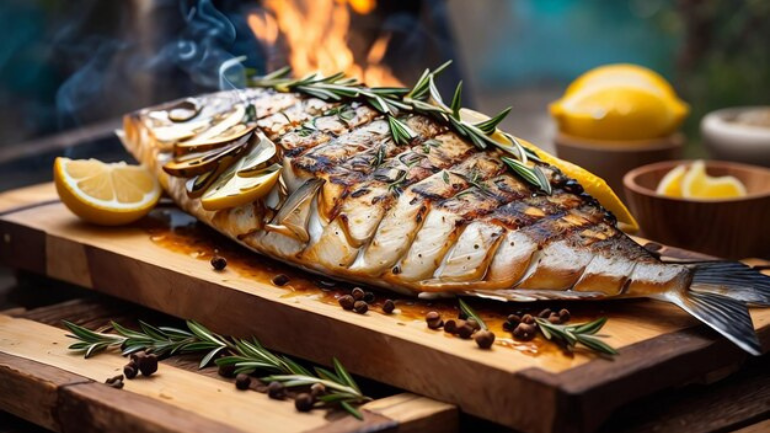
There are various methods for grilling fish, including the Emirati method. Samak Mashwi is traditionally cooked in a dome-shaped clay barbecue. The fish is pinned to the stick and placed in the grill, with the other end of the post attached at an oblique angle to the coal bed. Adding date paste to the marinade distinguishes it from other grilled fish. A large fish, preferably around and fat, must properly attach the fish to the stick. The fish is cooked without scales and then scaled before serving. The scales preserve the flesh from dissolving in the heat.
Lamb Ouzi
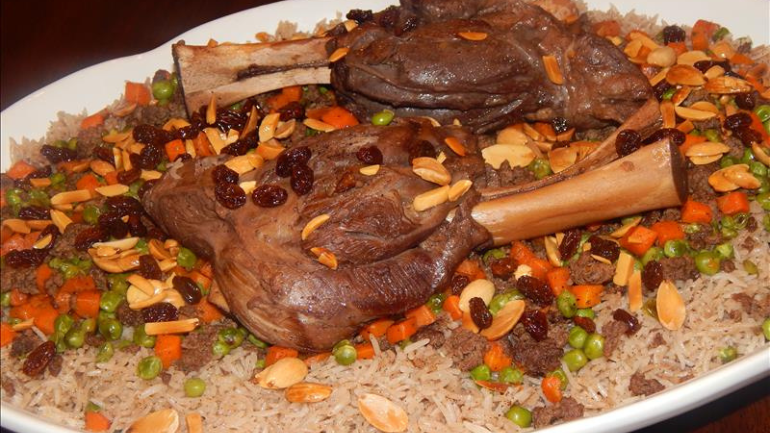
Lamb Ouzi is a delectable and much-sought-after dish in Emirati cuisine. Ouzi is a spiced rice dish with lamb meat. The final preparation also includes almonds and pine nuts. Ouzi is the answer if you want to enjoy lamb meat in the most excellent way possible. This is located in the center of the table in a vast container at every Emirati function.
This dish must be prepared in massive amounts. As a result, it is an excellent choice for large groups. Ouzi is, therefore, to be expected when tourists visit Emirati households. However, Ouzi must be planned because the lamb must be marinated for 24 hours before cooking. Serve the Ouzi with yogurt and tomato sauce.
The Machboos
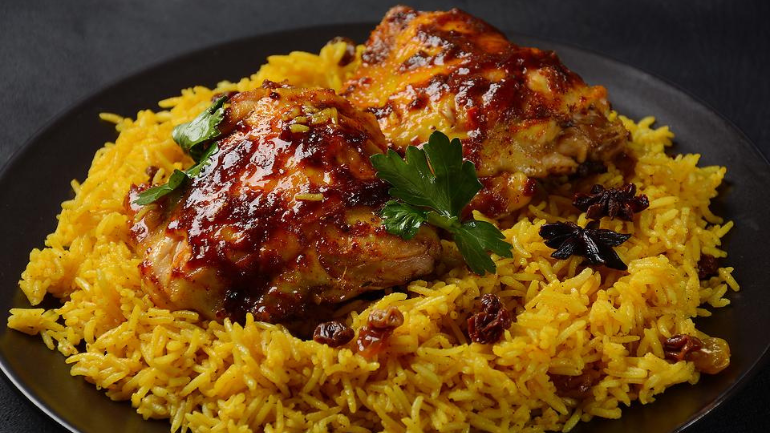
Rice was not initially a part of the UAE’s traditional cuisine. Emirati Arabs stole it from Indian and Persian traders decades ago. Wheat has formerly been the primary cereal. The most popular rice dish in Emirati cuisine is Machboos. It’s popular with both locals and expats. Their preparation, however, differs.
Machboos dishes can be made with chicken, lamb, or seafood. The essential flavorings are cloves, cardamom, cinnamon, lemon, and sometimes saffron. Machboos is an Emirati adaptation of Indian biryani. Lamb Machboos are the most popular of all sorts of Machboos.
Read more: Emirati Heritage Workshops
Traditional Desserts in UAE Culinary
Emiratis traditionally serve delicious dates before or after meals. From a religious standpoint, this custom honors Muhammad, but it was also a fantastic culinary decision. Most sweets use dates as paste or syrup, adding a subtle, natural sweetness to the dish. Emirati delicacies such as Luqeymat and Jazar Halwa are famous. Luqeymat are deep-fried pastry balls topped in date syrup, whereas Jazar Halwa is made with condensed milk and pistachio nuts.
Al Aseeda
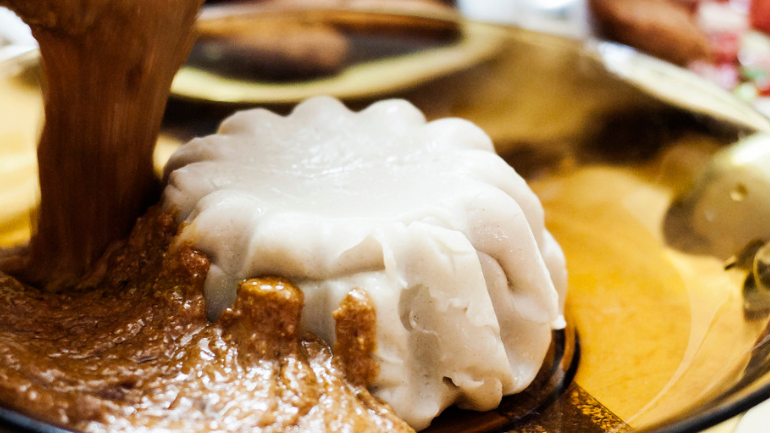
A traditional pumpkin dessert. This pudding, also known as Assidat al Boubar, is sweet yet not overpowering. The key components are pumpkin, flour, cardamom, saffron (by now, you know that Emiratis include cardamom in virtually everything), and sugar. Flavor with rosewater and honey, then garnish with nuts. Serve it warm for the most incredible flavor.
The Luqaimat
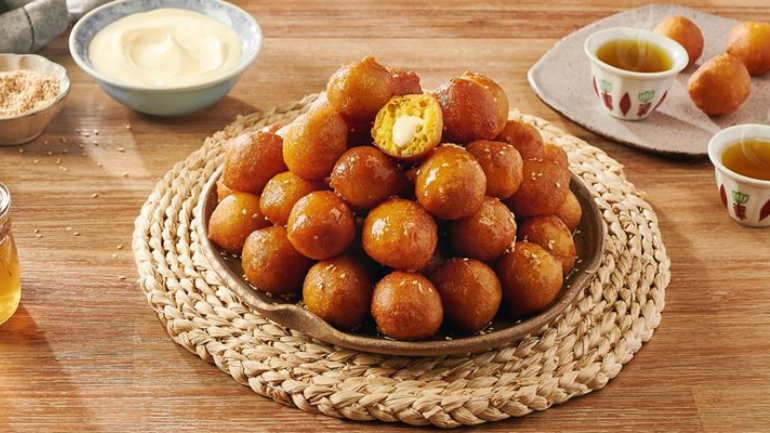
These are sweet fried dumplings covered with date syrup consisting of milk, sugar, butter, and flour. The most well-known traditional dessert is certainly luqaimat. Though a bit of caloric, these are too good to pass up. Luqaimat has a crunchy exterior and a soft, spongy interior. They’ve been dipped in date syrup and topped with sesame seeds. Cardamom and saffron are used to flavor the dish. Luqaimat, like the dessert, denotes tiny or bite-sized in Arabic.
Al Batheetha
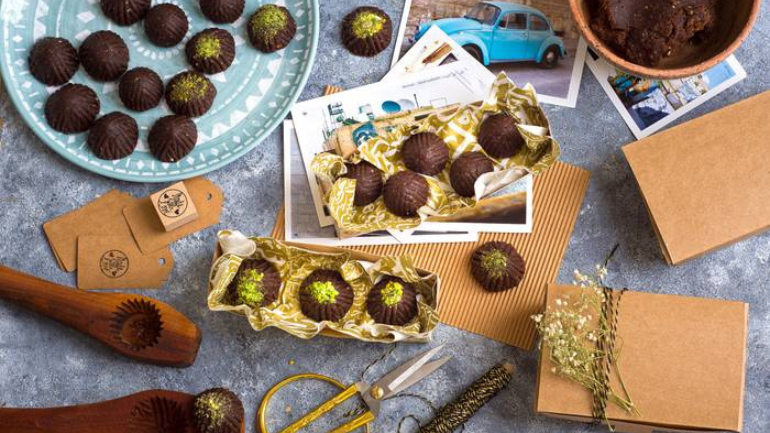
This is a simple but tasty date dessert. Batheetha is made of date paste, wheat flour, and a nut of your choosing baked with spices like cardamom and ginger. Using soft dates such as Medjool or Sukkary would be beneficial. Batheetha comes in many forms and sizes, flat like a cookie or round like a ball, but mostly round. It may also be adorned with sesame seeds and almonds. It can also be stored for a few days without rotting. Batheetha is more of a date-based biscuit than a dessert. Emiratis’ preferred snack with Arabic Coffee is, hence, not cookies.
Read more: Abu Dhabi Heritage Attractions
Abu Dhabi Tasty Dishes According to MICHELIN Chefs
It’s no secret that Abu Dhabi’s dining scene is a lively tapestry of foreign and local cuisines. It’s a gastronomic hotspot that permits global and local flavors to grow among its Emirati and various expat communities and an inexhaustible draw for its influx of international tourists. The culinary scene in the UAE capital is so diversified and delicious that it has quickly become a destination for foodies worldwide.
Because of its diverse food options, Abu Dhabi’s food scene recreates the familiarity and warmth many associate with “home.” As the saying goes, the road to anyone’s heart is through their stomach. The city’s culinary character has significantly impacted the stay of many of our MICHELIN restaurant chefs in town, professionally and emotionally.
Read more: Historic Sites in Dubai
Culinary Insights in UAE Cuisine
The cuisine culture in the UAE exemplifies the phrase “UAE is a melting pot of cultures.” Even though you are away from home, the UAE is one of the few countries where you would still ‘feel at home’ when you find your local food. You can purchase any cuisine that fits your budget here. Apart from the outstanding Emirati cuisine, you will be astounded by Dubai’s range of food alternatives worldwide.
When discussing the culinary culture of the UAE, we must first discuss Emirati cuisine. Although Emirati restaurants are less prominent in the UAE than other cuisines, the most popular dishes are available at every Middle Eastern diner. However, when it comes to authentic Emirati food, they have much more to offer than the well-known delights. And if you live in the UAE, you want to take advantage of this.
What is the traditional food culture of the UAE?
The traditional cuisine of the United Arab Emirates includes a lot of meat, grains, and dairy. Cucumbers and tomatoes, which are easy to cultivate in fertile soil, play an essential role in the diet. Loomi, or dried lemons, are also prominent, cultivated locally, and used in almost all recipes.
What is the traditional culture of the UAE?
Emirati culture synthesizes Arabian, Islamic, and Persian traditions, influenced by East African and Indian Subcontinent cultures. Islam has significantly impacted local architecture, music, clothing, cuisine, and lifestyle.
What is the special dish of UAE?
Khuzi. This meal, also known as Ghuzi, is considered the national food of the UAE, along with Al Machboos. It is a hearty and satisfying dish of roasted lamb, or mutton served on rice with veggies and almonds. Bu Qtair Fish Restaurant is on old 32B Street in Fishing Harbour 2.
What is the official food of the UAE?
Khuzi. It’s best to start with the UAE’s national dish, Khuzi. A roasted lamb piece is served on a bed of spicy rice, topped with raisins, veggies, and almonds. The spices used, often cardamom, cinnamon, saffron, and nutmeg, give the dish a rich flavor.
Every cuisine has its particular flavor. UAE Culinary Culture has its flavor. The abundance of cardamom, thyme, and saffron is a characteristic of traditional UAE food. They also rely heavily on meat and fowl. Some people mix Levantine food with Emirati specialties like Shawarma, Kunafa, and Falafel. Emirati food has fewer vegetables and leaves than Levantine and Palestinian cuisine. Levantine cuisine is known for its liberal use of olive oil.
